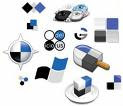Annual Reports with Zing

We view annual reports as an obligation, and we stuff them full of facts and figures. Are they interesting to read? Do they generate interest and support for your organization? Not usually. But they can. Let me show you two annual reports that are fun to read and provide greater understanding of the organizations’ purpose and culture. Although these are online reports, you could use the same storytelling techniques in written reports. Victoria Police Department The Victoria Police Department in British Columbia set out to create a positive public image with an online, interactive annual report. Real staff tell real stories. Sergeant Alan Cochrane explains how the seizure of a drug vehicle uncovered a case of identity theft; Karen Wallis tells us about one of their most active crime prevention volunteers; and the section on the Call Centre includes actual examples of receiving and responding to 911 calls. There are a few technical glitches, but those don’t seem very important ...




